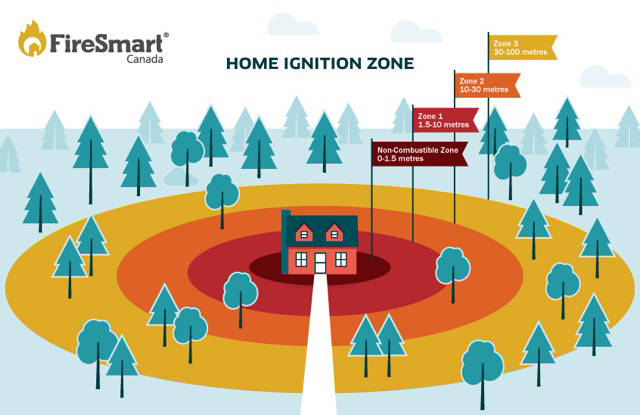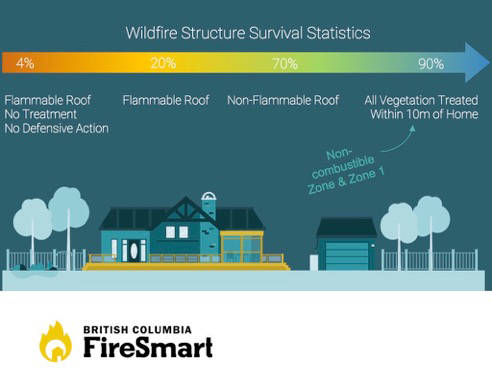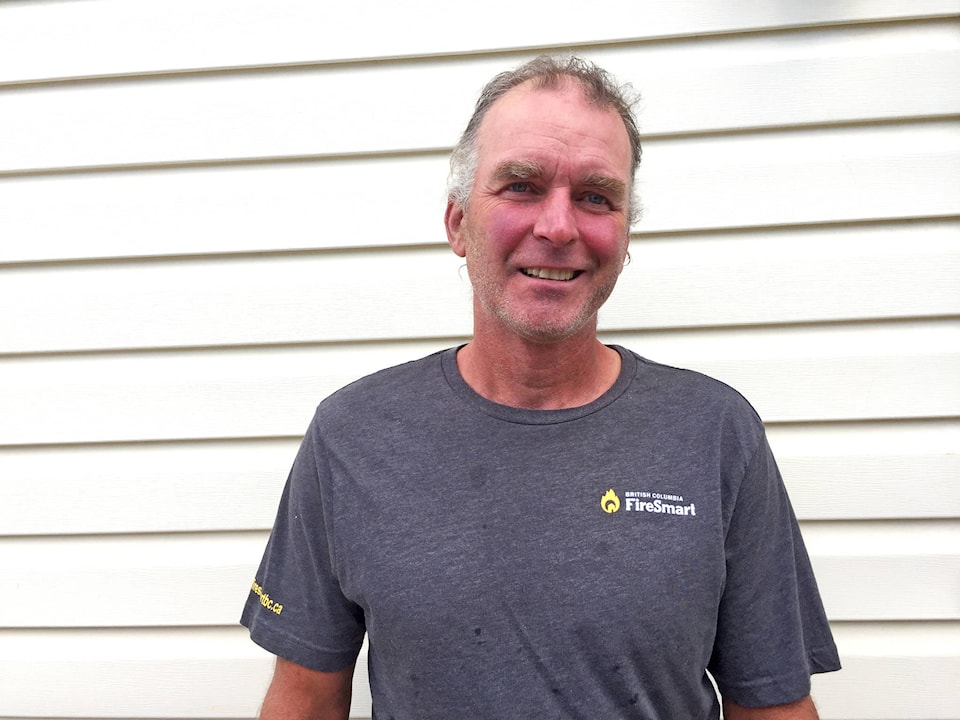Though the East Kootenay and the province at large hasn’t experienced the record breaking fire seasons we’ve seen in recent years, there are wildfires burning around the region and it’s important for homeowners to know how best to protect their properties.
As Kimberley’s local FireSmart representative, Steven Royer helps people become more aware of how to save their houses from burning.
He was approached by Kimberley’s Fire Chief Rick Prasad, who knew Royer owned a Royers Landscaping, and asked if he would be interested in becoming FireSmart certified.
Royer thought, ‘why not?’ and completed the online course in Cranbrook last October. Royer said that at the seminar in Cranbrook last year he was told that during the 2018 wildfire in the St. Mary’s Valley, Kimberley had a 90 per cent chance of losing all their homes, had the evacuation order come in.
“That was a wakeup call for me,” he said.
Make your home FireSmart
One of the most important things on the way to becoming FireSmart is understanding the “home ignition zone,” and keeping the zero to 10 metre radius around your house completely cleared of flammable debris such as pinecones and needles.
“It will stop the fire from going any farther, but you have to be very thorough,” Royer explained. “I think I’ve got about 10 houses now that I’ve converted to FireSmart, and basically it’s just mostly rockery, getting rid of the bark mulch, driftwood nuggets — anything that’s combustible around the house, get rid of it right away.”
He added he thinks “it’s amazing how many people are not aware of it,” and told the Bulletin that this past weekend, at the Kimberley Farmer’s Market, very few people stopped to get information on making their home FireSmart.
“That’s the attitude, ‘why worry about it? I’m only going to worry about it if they don’t have enough fire trucks.’ Wrong attitude! Plan now, for the future, that’s the key.”
He also said that Kimberley is very far behind compared to communities like Invermere, about ten years behind in fact. Everything they’re building there now is FireSmart, Royer said.
Another big thing to realize is that 50 per cent of homes burned by wildfires are actually caused by sparks or embers, so even though you may think your house is safe with the forest a few streets away, embers can carry on the wind for as much as nine kilometres from the flaming edge of a forest fire.
Because of this, it’s crucial to protect your property adequately to withstand these ember attacks.
“Stop ember accumulation,” he said. “If you put 12 millimetre screens on patio and staircases, that’s where the ember accumulation can start, but if you put a screen underneath it, they can’t get through so they can’t start a fire in your house.”
The 12 millimetre are the most affordable screens, but the three-millimetre screens, while more expensive, are also more effective as they are more high density.
Some free, easy things you can do are storing firewood at least 10 to 30 metres away from your house. Additionally, never store propane tanks within 10 metres of your house.
Also remember to remove any leaves from under your deck, and clear out any flammable debris from balconies and patios. Bark mulch is highly flammable so removing that from around the house will help to prevent outdoor fires.
Another simple thing to do is to clean leaves and pine needles out of your roof and gutters, ideally in the fall and spring.
Knowing and managing the trees on your property is also important. Coniferous trees are much more flammable than deciduous tree species such as birch or aspen, so consider that when planting new trees.
Pruning the branches of your trees to two metres is another free FireSmart activity to help keep your property safe. If your trees are too close to utility lines, you can contact your service provider for assistance with removing them. Also make sure that no trees or other vegetation are overhanging your roof.
As far as your lawn goes, it’s best to keep grass cut to a height below 10 centimetres. Fires can rapidly travel through long grass.
For more information on making your home FireSmart reach out to Royer’s Landscaping at 778-481-5195, email stevenroyer66@gmail.com or visit firesmartbc.ca,


